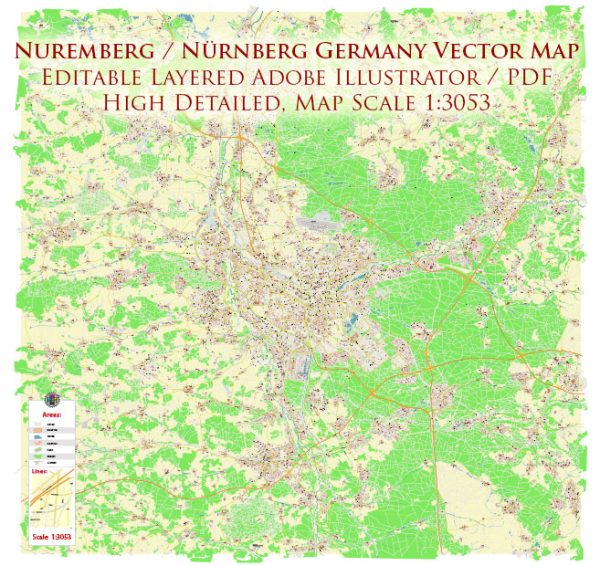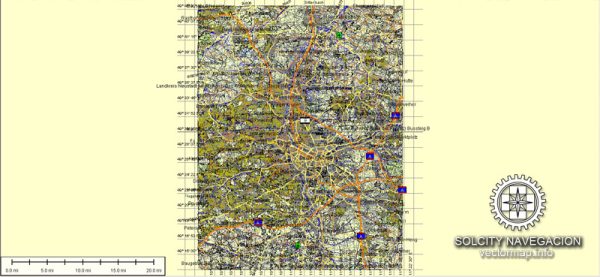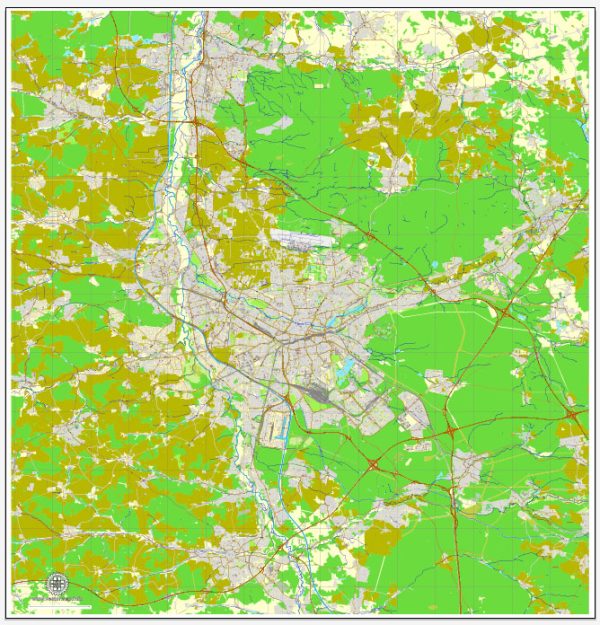Nuremberg, located in the state of Bavaria, Germany, has a rich history of urban development that spans over a thousand years. Here is a brief overview of the key historical periods in the city’s urban development:
- Medieval Period (11th to 15th centuries):
- Nuremberg’s history can be traced back to the 11th century when it was a small settlement on the Pegnitz River.
- In the Middle Ages, the city grew in importance due to its strategic location as a crossroads of major trade routes. It became a significant market town and gained imperial favor.
- The city’s fortifications, including the impressive Nuremberg Castle, were built during this period to protect it from external threats.
- Renaissance and Early Modern Period (16th to 18th centuries):
- Nuremberg experienced significant economic and cultural growth during the Renaissance.
- The city became a center for arts, sciences, and humanism. Artists like Albrecht Dürer, a famous painter and printmaker, lived and worked in Nuremberg during this time.
- The 16th century brought religious tensions, including the Reformation. Nuremberg managed to maintain a delicate religious balance, and the city council played a crucial role in mediating conflicts.
- Baroque Period (17th to 18th centuries):
- Nuremberg’s architecture flourished during the Baroque period. Grand buildings and churches were constructed, showcasing the wealth and influence of the city.
- The city maintained its economic importance through trade, and the famous Nuremberg laws regulated trade practices.
- Industrialization (19th century):
- The 19th century brought industrialization to Nuremberg. The city became known for its metal and toy industries.
- The railway connection further boosted economic development, connecting Nuremberg to other major cities in Germany.
- World Wars and Reconstruction (20th century):
- Nuremberg suffered significant damage during World War II due to Allied bombings. The city was chosen as the site for the Nuremberg Trials, where leaders of the Nazi regime were prosecuted.
- After the war, Nuremberg underwent extensive reconstruction efforts. The city was rebuilt, preserving its historical character while incorporating modern elements.
- Contemporary Period:
- In recent decades, Nuremberg has continued to thrive as a cultural and economic hub. The city is known for its fairs, particularly the Nuremberg Toy Fair, reflecting its historical connection to the toy industry.
- The medieval architecture, including the city walls, castle, and Gothic churches, continues to attract tourists, making Nuremberg a blend of historical charm and modern vitality.
Nuremberg’s history of urban development is a testament to its resilience and adaptability, as the city has evolved through various historical epochs while preserving its rich cultural heritage.




 Author: Kirill Shrayber, Ph.D.
Author: Kirill Shrayber, Ph.D.